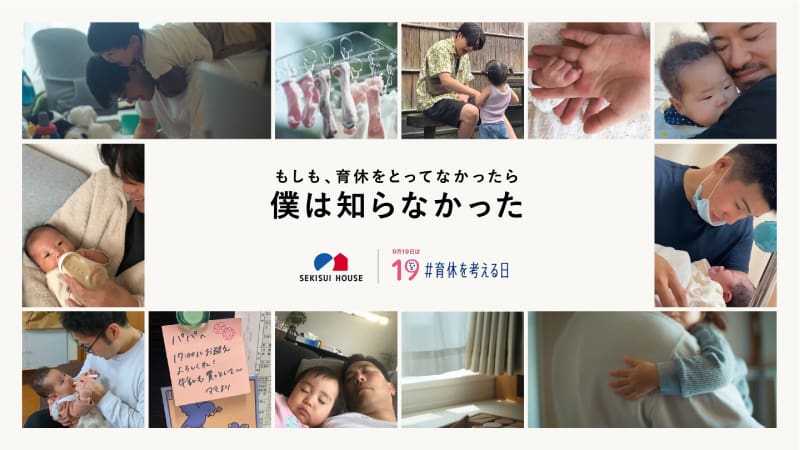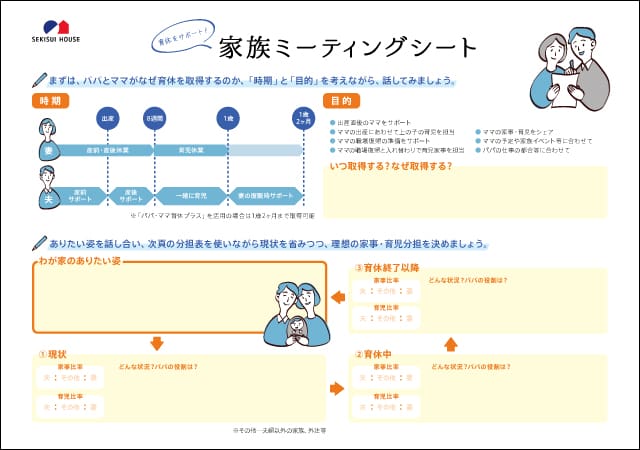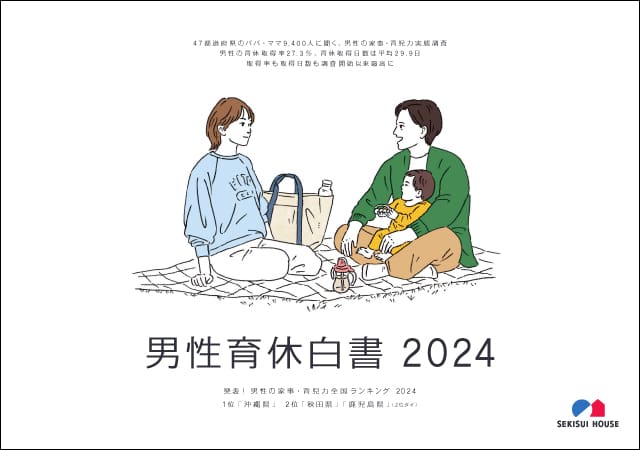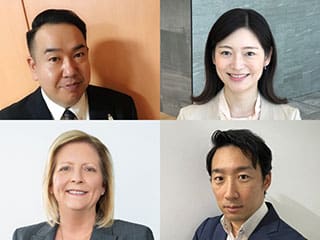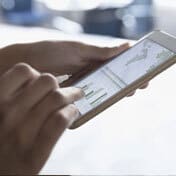Building a society where paternity leave is normal
At Sekisui House, we have been encouraging our male employees to fully utilize at least one month of paternity leave since September 2018. This is part of our efforts to bring greater happiness to our employees and their families. Since 2019, we have commemorated September 19 as the Think About Childcare Leave Day. To realize our vision of a world where it is commonplace for men to take paternity leave, we have been implementing the IKUKYU.PJT project annually to promote greater awareness of paternity leave in industry, government, and academia. This year, which marks the sixth year of the project, we held an event to present the 2024 White Paper on Paternity Leave as part of the project. We introduced the evolving landscape of paternity leave, the latest trends, and the actual experiences of people who have taken it. In addition, we also examined the issues involved in using paternity leave as a catalyst for creating a better society.
Project movie “That’s New To Me”
We are in the sixth year of IKUKYU.PJT. This year, a record 154 companies and organizations participated in the project, and we are working together to disseminate a wide range of information and implement various programs. The online video “That’s New To Me” is based on the real-life experiences of people who have taken paternity leave, and was made into a movie for the project to effectively capture reality by combining footage and photographs of families from participating companies and organizations. The message is that the insights and experiences gained from taking paternity leave can help individuals and their families discover new sources of happiness.
Changes in society and solutions for new issues emerging in paternity leave
Topics from the 2024 White Paper on Paternity Leave and Our Initiatives
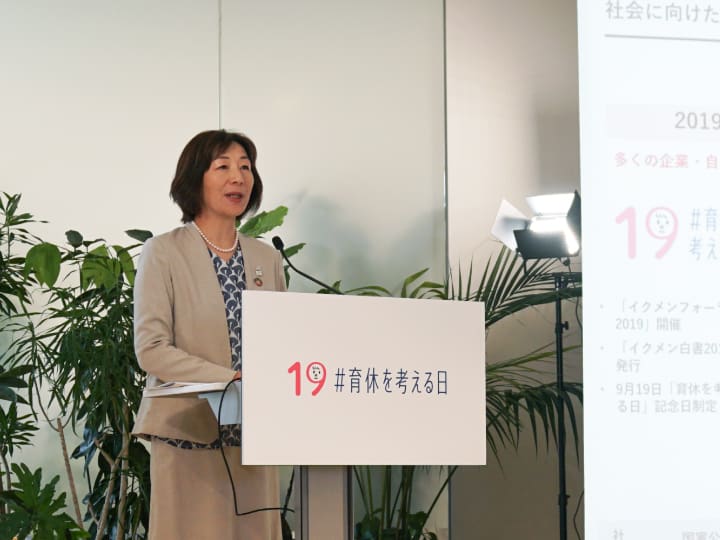
Executive Officer, Senior Manager of the Diversity and Inclusion Promotion Department *
Miwa Yamada
*Departments and positions are as of September 19, 2024; Current position: General Manager, ESG Management Promotion Headquarters
Starting in 2019, Sekisui House has been conducting an annual survey to determine the realities of housework and childcare for men, the results of which are published in our White Paper on Paternity Leave. Miwa Yamada, Executive Officer and Senior Manager of the Diversity and Inclusion Promotion Department, gave a presentation on our initiatives for paternity leave, as well as topics from the 2024 White Paper on Paternity Leave.
Incorporating measures into the program to remove potential barriers to taking paternity leave
At Sekisui House, we have adopted the fundamental philosophy of “love of humanity” as our corporate philosophy, and based on our global Vision, “make home the happiest place in the world,” we are working towards a society where it is normal for men to take paternity leave in Japan. We believe that empowering our employees to realize their autonomy is important to enhance their value as human resources, and we see paternity leave as a way to build a foundation for the happiness of our employees’ families.
The following is an overview of Sekisui House’s paternity leave program. The program was launched in September 2018, and is available to our employees with children under three years of age. The main features of the program are that it encourages employees to fully utilize at least one month of paternity leave, that the first month of leave is paid, and that the leave can be taken in up to four blocks. Also, Sekisui House had already expanded its paternity leave program by introducing Childcare Leave at Birth program in April 2021, ahead of the implementation of the Postpartum Paternity Leave system in October 2022. The program is flexible enough to allow employees to take leave in one-day increments, as often as necessary, within the eight-week period after childbirth when mothers need the most support from fathers, and to prevent mothers from suffering from postpartum depression.
At Sekisui House, the first step in taking paternity leave is to prepare a Family Meeting Sheet. When and why do you want to take paternity leave? How do you share specific housework and childcare before, during, and after your paternity leave? This is a tool for family members to discuss these details. We believe that proper family communication before taking paternity leave will lead to meaningful paternity leave and family happiness.
As of the end of August 2024, 3,206 male employees are eligible for paternity leave. Among them, all 2,138 eligible employees who had reached the deadline to use their leave have taken at least one month of paternity leave, maintaining a 100% take-up rate since February 2019.
Significant increase in both the take-up rate and length of paternity leave
We will look at the changes over the past six years for the 2024 White Paper on Paternity Leave. The paternity leave take-up rate for male employees has reached 27.3%, the highest since we began the survey in 2019, and has increased 2.8 times in the past six years. In 2025, the requirement to disclose childcare leave take-up rates will be extended from companies with more than 1,000 employees to include those with more than 300 employees, so we can expect further increases. Men took an average of 29.9 days of paternity leave, which is also a record high. The significant increase of 12.6 times over the past six years is due to fewer people taking leave for less than a week, and more people taking leave for six months or more.
Men’s desire to take paternity leave increases the length of paternity leave
Men who took paternity leave for the first time following the birth of their second child accounted for 36.8%. This appears to be due to changes in the society as a whole that are making it easier for individuals to take paternity leave. Observations include remarks such as “more people are taking paternity leave than in the past” and “companies are becoming more understanding.” Furthermore, more people are taking longer paternity leave following the birth of their second and subsequent children, with the average length at 129.9 days. This is more than four times the average of 29.9 days for paternity leave. Some of the motivations expressed were based on insights gained from their experiences with their first child. For example, “After the experience with my first child, I thought it would be better to take paternity leave for as long as possible,” “I wanted to experience my child’s growth together with my wife,” and “Now that we have two children, I want to ease my wife’s load.”
Length of paternity leave that men take influences their attitudes at home and in the workplace
Our findings show that men who took longer paternity leave noticed more positive changes at home. For example, some reported spending more time with their children after the experience, or learning to appreciate the amount of work their wives do. There are also changes in their attitudes after they return to work. We are seeing positive effects, and awareness tends to be higher among those who have taken longer paternity leave. Some observations include “I have become more considerate of people with children,” “The feeling and actions of mutual support have increased,” and “I have become more conscious of how I manage my time.”
Wives’ satisfaction with their husbands’ paternity leave increases their motivation for work
The wives were 58.9% satisfied when their husbands took less than one month of paternity leave, compared to 78.8% for wives whose husbands took six months or more. This suggests that the longer the paternity leave taken by the husband, the greater the wife’s satisfaction. In addition, wives who are more satisfied with their husband’s paternity leave are more likely to return to work and will do so sooner. At the same time, as the length of the husband’s paternity leave increases, there is a notable improvement in the wife’s attitude toward her own work and career.
Many men are satisfied with taking paternity leave for its own sake
42% of women rated their husband’s paternity leave as “paternity leave just for the sake of taking leave.” Even when men perceived that they took paternity leave just for the sake of taking leave, they still reported satisfaction with their leave. Although men’s perception of “paternity leave just for the sake of taking leave” decreases with the length of their paternity leave, women’s perception of “paternity leave just for the sake of taking leave” remains high: about 40% of women believed that their husbands took paternity leave just for the sake of taking leave, even when the paternity leave lasted more than one month. This shows a perception gap between men and women.
Communication is key to bridging perception gap
Compared to the general female population surveyed for the White Paper on Paternity Leave, we found that our employees’ wives were less likely to perceive their husbands’ paternity leave as “paternity leave just for the sake of taking leave.” In addition, when comparing wives’ satisfaction with their husbands’ paternity leave, our employees’ wives were 79% satisfied, nearly 15% higher than the general female population. We believe that improving communication among family members by using the Family Meeting Sheet, which we mentioned earlier, has helped to reduce the tendency of “paternity leave just for the sake of taking leave.”
While the take-up rate of paternity leave in Japan has reached an all-time high, the new issue that has emerged is how to improve the quality of paternity leave. We believe it is important for couples and families to have a thorough discussion about the purpose of taking paternity leave, the length of the leave, and the distribution of housework and childcare duties. Taking paternity leave can help individuals and their families discover new sources of happiness. Sekisui House will continue to play a role in building a society where taking paternity leave is commonplace.
My personal experience in taking paternity leave
During paternity leave, we created an environment where the whole family could help each other with housework and childcare duties
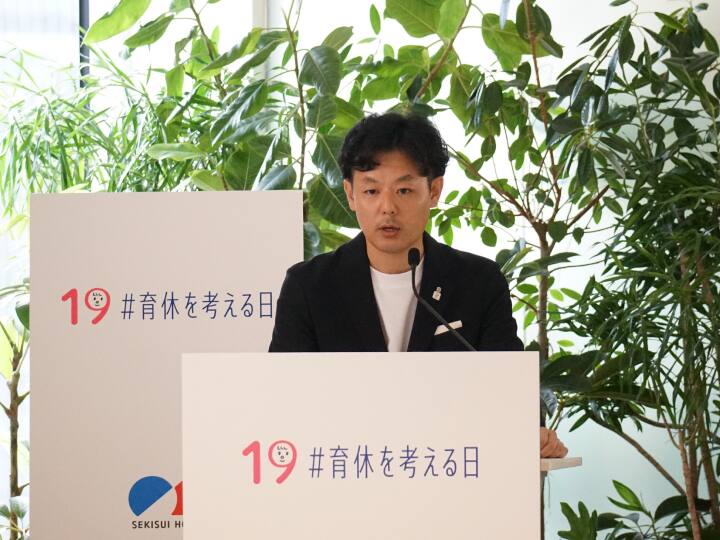
Office of Personnel and Employee Relations, Human Resources and General Affairs Department
Shogo Tsukinami
Joined the company as a mid-career hire in 2018
Family members
My wife and our four children (6th grader, 3rd grader and 1st grader in elementary school, and a 7-month-old baby)
Duration of paternity leave
31 days for our third child, taken in three separate blocks between 2019 and 2020
16 days for our fourth child, taken from February to March 2024 (I also used the Childcare Leave at Birth program and plan to use the remaining 15 days by January 2027, at a time when there is not a lot of work going on)
I took my second paternity leave after the birth of our fourth child
The year after I left my previous company and joined Sekisui House, I took my first paternity leave. My third child was two years old then. As my wife was also working, I took 31 days in separate blocks, mostly when my two older children were on spring and summer break. I gained a lot of experience through handling full-scale housework and childcare for the first time. Then came the birth of my fourth child in February this year, and I took my second paternity leave. We are all enjoying the experience of caring for a newborn again after six years.
I informed my boss and group members about my paternity leave six months before the expected due date. It was not a matter of deciding whether to take paternity leave. Instead, I was able to start the conversation with “when and how I will take it,” which allowed me to approach the situation with a positive mindset.
I considered potential issues and determined specific actions to take
One problem I faced when planning my paternity leave was that my wife’s due date coincided with the first busy period that I would experience after being transferred to my current department. I also faced another problem at home: how to manage the period following my wife’s hospitalization after childbirth, as well as the one month after childbirth when it would be difficult for her to leave the house. Specifically, we had to figure out how to get our third child to and from the kindergarten bus, and how to get him to and from his enrichment lessons on weekday evenings. My parents live close enough that they would be willing to help if we asked, but my wife and I discussed how we could do as much as possible ourselves this time.
With this in mind, I took advantage of the Childcare Leave at Birth program, which allows employees to take leave in one-day increments within the eight-week period after childbirth. During the week, I worked from home on Mondays and went to the office on Wednesdays and Fridays. This allowed me to balance my work responsibilities and housework/childcare duties without being absent for two or more days in a row. At work, I did my best not to leave tasks undone for the following day, and I am grateful to my group members for their help in following up on my tasks. At home, I also made an effort to prepare meals for the following day the day before I went to work.
We enjoy raising the new family member as a family
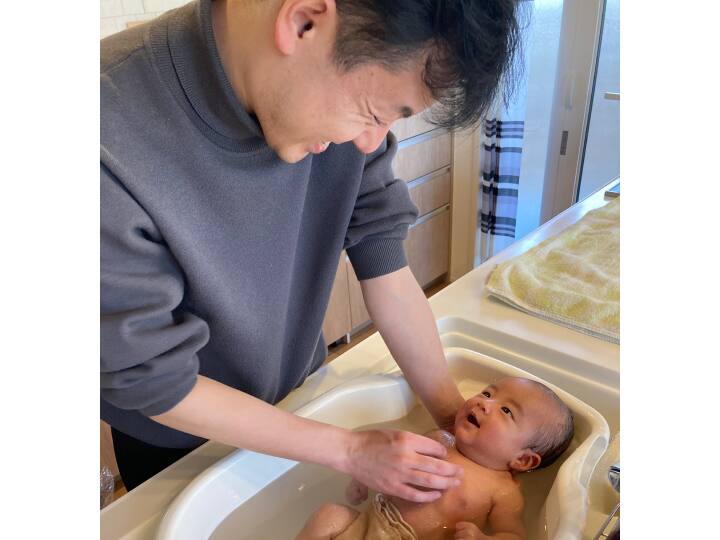
My one-month paternity leave went by quickly, but housework and childcare duties will continue for a long time to come. So I discussed with my wife our plans during my paternity leave, keeping in mind what we wanted to accomplish after the leave. During my paternity leave for our third child, I set myself the goal to try handling everything myself, focusing on understanding my wife and getting an overall picture of the demands of housework and childcare duties. This time round, my focus is on enjoying childcare as a family. I wanted to encourage our children to participate in housework and childcare alongside their parents, while also providing support to enable them to do things for themselves.
I started by clearly defining the distribution of housework and childcare duties based on the Family Meeting Sheet, dividing it into phases before, during, and after my paternity leave. Before my paternity leave, I left almost all the housework to my wife, but I decided to handle most of it during my paternity leave. And by involving the children in housework and childcare during my paternity leave, my goal was to establish a 40:40:20 distribution of housework and childcare responsibilities among myself, my wife and our children once my paternity leave ended.
Based on the family meeting, I submitted the application form for paternity leave to the company. I filled out the form while discussing with my supervisor which tasks to delegate to whom and how. The application form also included a section for spouses to provide comments. My wife shared her expectations for me, stating “I don’t want you to handle everything alone. I want you to create an environment where everyone in the family can work together and share the challenges and joys of housework and childcare.”
I can get a real sense of my family’s happiness every day as I witness my children’s growth
My eldest daughter, who dreams of becoming a nursery teacher, is very proactive when it comes to things like feeding the baby milk, changing diapers, and bathing and putting the baby to bed. I asked my second daughter and eldest son to do things that they might enjoy doing, such as putting away the dishes, folding the laundry, and feeding the baby milk. Even if they are not sure how to start, taking an interest in housework and childcare can give them a chance to try things out for themselves. These days, they enjoy caring for the baby while also reading books to them and feeding them baby food.
In my case, it was only because I could take paternity leave for my third child that I could consider having a fourth child. Raising four children may seem like a lot of work, but when everyone in my family helps out with the housework, the workload is reduced to one-fifth, and I feel firsthand that my family’s happiness increases fivefold as I watch them grow.
Taking paternity leave is only possible with the support of my colleagues, parents, and family. I want to make the most of my time both at work and with my family, and always remember to be grateful. I hope that my experience will serve as a good precedent for the next person to take paternity leave so that paternity leave becomes more deeply and widely accepted in society.

Active Participation of Diverse Personnel [Main Page]
International Business Headquarters (America, Australia)
Specific Initiatives: Workplaces Where Anyone Can Demonstrate Their Abilities
Diversity meet-and-greet events 2022
Diversity meet-and-greet events 2021
Specific Initiatives: Becoming an Industry Leader in LGBTQ Initiatives
